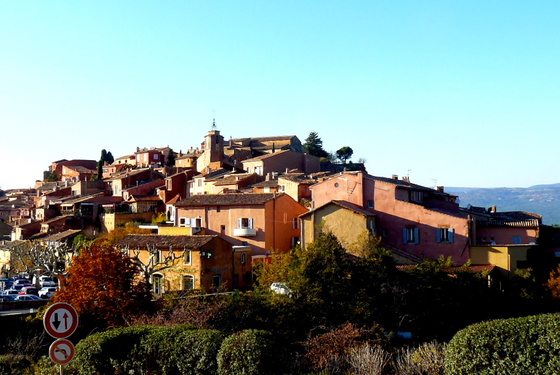Provence, sunny Provence, is dotted with picturesque hilltop villages, many dating from Roman times. One of the most famous is Roussillon, site of the largest outcropping of ochre, iron oxide, on the planet.
There was a time that this accident of geology made Roussillon wealthy; the pigment was in high demand as a coloring agent for textiles. It was exported by the ton to give a familiar color of home to buildings in the French colonies. And iron oxide was a crucial ingredient in transforming latex from the forests of southeast Asia into rubber.
But then petroleum replaced latex, the French colonies became sovereign, and pigment could be extracted more cheaply elsewhere. The red hills of Roussillon lost their allure.Today the quarries are abandoned, the old machinery and the complex channels that separated sand and iron are overgrown. Rousillon's 1,200 residents live on tourism.
Yes, Roussillon still counts as one of the most beautiful villages in France. Yes, Samuel Becket hid out here to escape notice by the Nazis. Yes, there's a nature walk to see what's left of the yellow, pink and purple cliffs, an earnest museum and conservatory, an annual pottery market, art galleries, rooms for rent. But Roussillon's historic economic engine is gone for good.
Sixty years ago, the Harvard sociologist Lawrence Wylie wrote a charming book, "A Village in the Vaucluse," about the year he spent in Roussillon with his family. He saw enormous changes in subsequent visits. What he didn't see, alas, was the demise of the village's raison d'être. Not that there's anything wrong with tourism; it's the largest generator of foreign currency in France, and France is the most-visited country in the world. But it gets you thinking. Whaling, cod-fishing, silk weaving, they've all gone by the boards. What next? Software?
Cornichon is in France this week as a guest of the Marseille Chamber of Commerce and the Provence Tourism Convention. Many thanks for your generous hospitality!

Leave a comment